The Andaman and Nicobar Islands, a captivating archipelago in the Bay of Bengal, are renowned for their stunning natural beauty and unique historical significance. This collection of islands offers a wealth of intriguing facts, from its rich biodiversity to its pivotal role in Indian defense strategy.
In this exploration of fascinating facts about Andaman and Nicobar, we uncover everything from the islands’ exotic wildlife and geological wonders to their historical landmarks and strategic importance.
Facts about Andaman and Nicobar
1. Flora and Fauna of Andaman
With over 8,250 square kilometers spread across 572 islands, the Andaman and Nicobar archipelago is a paradise for nature lovers. This tropical haven boasts a rich diversity of flora and fauna. The islands are home to more than 3,000 species of plants and 6,451 species of animals, showcasing an incredible variety of life.
Bird watching is particularly popular in the Andamans, with over 240 bird species found across the islands. The region also features about 96 wildlife sanctuaries, one biosphere reserve, and nine national parks, all protecting its unique ecosystems. The lush tropical forests and vibrant underwater worlds of the Andamans make it a fascinating destination for those interested in exploring its natural beauty.
2. The Most Spoken Language is Not Andamanese or Nicobarese
The most widely spoken language in the Andaman and Nicobar Islands is not Andamanese or Nicobarese. Bengali is the most commonly spoken language, followed by Hindi, Tamil, Telugu, and Malayalam.
In addition to these languages, Andaman Creole Hindi is widely used as a trade language in the Andaman Islands. This Creole Hindi helps people from different language backgrounds communicate with each other, especially in markets and daily transactions.
Although the Indigenous tribes have their languages, the diverse population of settlers has made languages like Bengali and Hindi more prevalent in everyday life on the islands.
3. The names “Andaman” and “Nicobar” are Taken from the Malay Language
The names ‘Andaman’ and ‘Nicobar’ have their origins in the Malay language. The name “Andaman” is believed to be derived from “Hanuman,” the Hindu monkey god, who was known to the Malays as “Handuman.”
The name “Nicobar” is thought to be a modified version of the South Indian term “Nakkavaram,” which means “Land of the Naked.” This name is mentioned in the Tanjore inscription from around AD 1050.
These historical names reflect the cultural and linguistic influences that have shaped the identity of the Andaman and Nicobar Islands over the centuries.
4. Katchal Island Received the First Sun Rise of the Millennium
Katchal Island, a small island near Nicobar, gained international attention at the turn of the millennium. It was declared by the Royal Greenwich Laboratory as the first inhabited place on Earth to witness the sunrise of the new millennium in 2000.
Before this, Katchal was virtually unknown to the world. However, its special moment in history made it famous. To commemorate this event, India Post issued a special stamp in the year 2000. This stamp depicted the first sunrise of the millennium at Katchal, marking the island’s unique place in history.
5. During World War II, the Andaman and Nicobar Islands Were Occupied by the Japanese Army
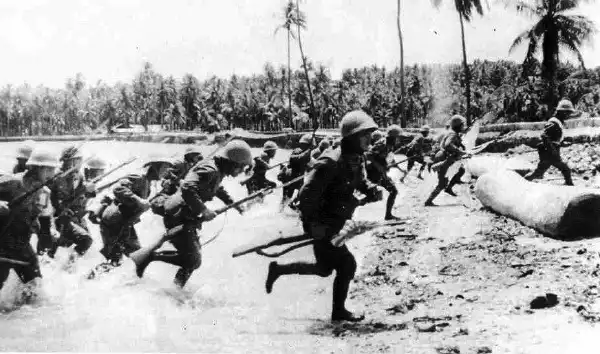
During World War II, the Andaman and Nicobar Islands were occupied by the Japanese army. The islands held a unique position as the Azad Hind Fauj, or Indian National Army, enjoyed special privileges there, a status not given to any other army.
General Loganathan of the Indian National Army served as the governor of the islands. On 2nd October 1944, he left Port Blair, passing the administration to Major Alvi. A year later, on 7th October 1945, the Japanese army formally handed over control of the islands to Brigadier J. A. Salmons and Noel Patterson, the Chief Administrator of the Indian Civil Service. This marked the end of the Japanese occupation and a significant moment in the islands’ history.
6. The Largest Sea Turtles in the World is Found Here
The Andaman and Nicobar Islands are home to India’s best nesting beaches for three species of marine turtles: the Hawksbill, the Green Turtle, and the world’s largest sea turtle, the Leatherback (Dermochelys Coriacea).
The Leatherback turtle, in particular, is of global importance. The nesting population of these turtles in the Nicobar Islands is one of the few colonies in the Indo-Pacific region that exceeds 1,000 individuals. This makes the Nicobar Islands a critical habitat for the conservation of Leatherback turtles, as well as a vital part of global efforts to protect these magnificent creatures.
7. Archipelago of 836 Islands
The Andaman and Nicobar Islands are a vast archipelago consisting of 836 islands. Despite this large number, only about 31 of these islands are inhabited.
The rest of the islands remain uninhabited, preserving their natural beauty and unique ecosystems. These uninhabited islands are rich in diverse wildlife, dense forests, and pristine beaches, making them a haven for nature lovers and researchers.
The inhabited islands, on the other hand, are where people live, work, and engage in tourism. This blend of inhabited and uninhabited islands gives the Andaman and Nicobar Islands a unique charm, offering both untouched natural landscapes and vibrant communities.
8. Biodiversity Hotspot
The Andaman and Nicobar Islands are a biodiversity hotspot, teeming with a rich variety of flora and fauna. Many of the species found here are endemic, meaning they exist only in this region and nowhere else on Earth.
The islands’ dense forests, pristine beaches, and unique ecosystems support a wide range of wildlife, including rare birds, marine life, and unique plant species. The isolation of the islands has allowed these species to evolve in ways that are distinct from those on the mainland.
This makes the Andaman and Nicobar Islands a crucial area for conservation, as protecting these unique species helps preserve global biodiversity. The islands are not just beautiful but also ecologically important, serving as a sanctuary for rare and endangered species.
9. Radhanagar Beach was Ranked as One of the Best Beaches in Asia
Radhanagar Beach, located on Havelock Island in the Andaman and Nicobar Islands, is one of the most stunning beaches in the region. Its beauty was recognized globally when Time magazine ranked it as one of the best beaches in Asia in 2004.
The beach is known for its crystal-clear turquoise waters, soft white sand, and lush green surroundings. It offers a peaceful and serene environment, making it a perfect spot for relaxation and enjoying nature.
Radhanagar Beach is also popular for its breathtaking sunsets, which attract visitors from around the world. Whether you’re looking to swim, sunbathe, or simply take in the natural beauty, Radhanagar Beach offers an unforgettable experience.
10. The Limestone Caves of Baratang Island are a Natural Wonder
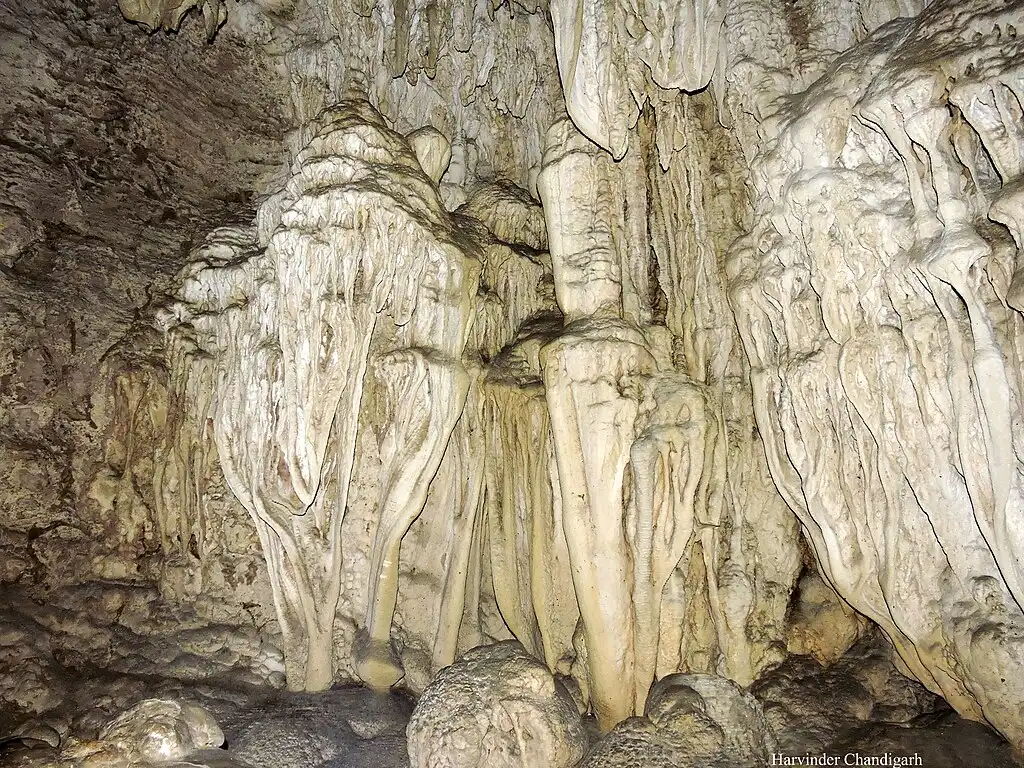
The Limestone Caves on Baratang Island in the Andaman and Nicobar Islands are a natural wonder that attracts many visitors. These caves have been formed over millions of years, with water slowly eroding the limestone to create stunning formations.
Inside the caves, you’ll find intricate stalactites and stalagmites that create a surreal and mesmerizing landscape. The cool, dimly lit interiors of the caves add to the sense of mystery and wonder.
Visiting the Limestone Caves is a popular activity for tourists, offering a unique glimpse into the natural beauty and geological history of the islands. The journey to the caves, which often includes a boat ride through mangrove forests, is an adventure in itself, making it a memorable experience for all who visit.
11. The Jarawa Tribal Reserve is an Area Dedicated to Protecting the Jarawa Tribe
The Jarawa Tribal Reserve, located in the Andaman and Nicobar Islands, is a protected area dedicated to the Jarawa tribe, one of the most isolated tribes in the world. This reserve is crucial for preserving their traditional way of life and safeguarding their unique culture from outside influence.
Access to the reserve is highly restricted, with strict regulations in place to prevent contact with the tribe. This helps protect the Jarawas from potential health risks and cultural disruption that could arise from interaction with outsiders.
The reserve plays a vital role in ensuring the Jarawa tribe can continue to live in harmony with their natural surroundings, maintaining their age-old traditions and independence. It is a reminder of the importance of respecting and preserving the cultures of indigenous communities.
12. The Islands are Known for Their Pearl Farming
The Andaman and Nicobar Islands are renowned for their pearl farming, which produces high-quality pearls that are highly valued in the jewelry market. The clear, pristine waters surrounding the islands provide the perfect environment for cultivating pearls.
Pearl farming in the region involves carefully nurturing oysters in the sea, where they naturally produce pearls over time. These pearls are known for their luster and quality, making them sought after by jewelers and collectors worldwide.
The industry not only contributes to the local economy but also supports traditional livelihoods in the islands. Pearl farming in the Andaman and Nicobar Islands represents a blend of natural beauty and skilled craftsmanship, creating treasures from the sea that are cherished globally.
13. 2004 Tsunami
On 26th December 2004, a massive earthquake measuring 9.3 on the Richter scale struck along the Andaman and Nicobar Islands and Northern Sumatra. This powerful earthquake triggered a catastrophic tsunami with waves as tall as 33 feet, devastating most of the islands.
The tsunami caused widespread destruction, claiming over 2,000 lives and leaving many more injured and displaced. The force of the waves also led to significant land loss, with over 100 square kilometers of the islands submerged under the sea.
The 2004 tsunami was one of the deadliest natural disasters in the region’s history, leaving a lasting impact on the communities and landscape of the Andaman and Nicobar Islands. The tragedy also highlighted the vulnerability of coastal regions to such catastrophic events.
14. The Cellular Jail in Port Blair, also Known as “Kala Pani”
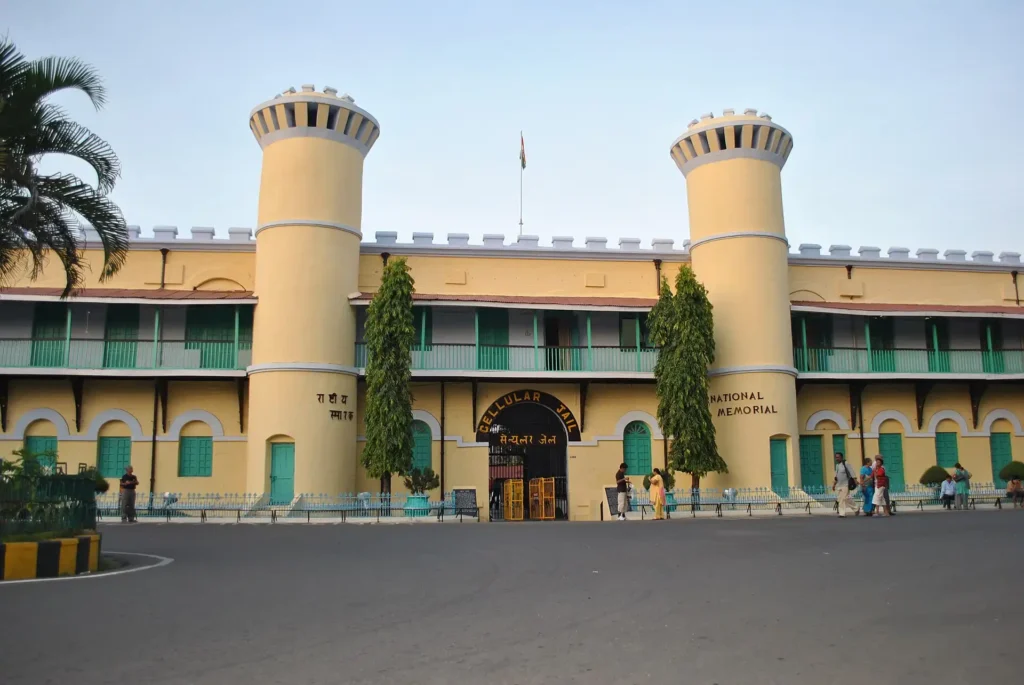
The Cellular Jail in Port Blair, also known as ‘Kala Pani,’ is a historic prison built during British rule in India. It was designed to imprison political prisoners and freedom fighters who challenged British authority.
The jail was notorious for its harsh conditions, and its remote location in the Andaman Islands made escape nearly impossible. The term ‘Kala Pani,’ meaning ‘black water,’ symbolized the dread associated with being sent to this isolated prison, far from the mainland.
The Cellular Jail had seven wings, radiating from a central tower, with tiny, dark cells where prisoners were kept in solitary confinement. Many freedom fighters, including notable leaders like Veer Savarkar, were imprisoned here. Today, the Cellular Jail stands as a national monument, a symbol of India’s struggle for independence, and a reminder of the sacrifices made by those who fought for freedom.
15. Home to the Only Active Volcano in the Indian Subcontinent
Barren Island, located in the Andaman and Nicobar Islands, is home to the only active volcano in the Indian subcontinent. This remote island is a significant geological site, known for its volcanic activity.
Since 1787, the Barren Island volcano has erupted over 10 times, with the most recent eruption occurring in 2020. The volcano’s periodic eruptions have shaped the island’s rugged landscape, making it a fascinating destination for scientists and adventure enthusiasts.
Despite its frequent activity, Barren Island remains largely uninhabited, with only a small population of wildlife adapted to its harsh conditions. The island’s volcanic nature adds to the unique and diverse environment of the Andaman and Nicobar Islands, making it a point of interest for both researchers and travelers.
16. North Sentinel Island is Home to One of the Most Isolated Paleolithic Tribes of the World
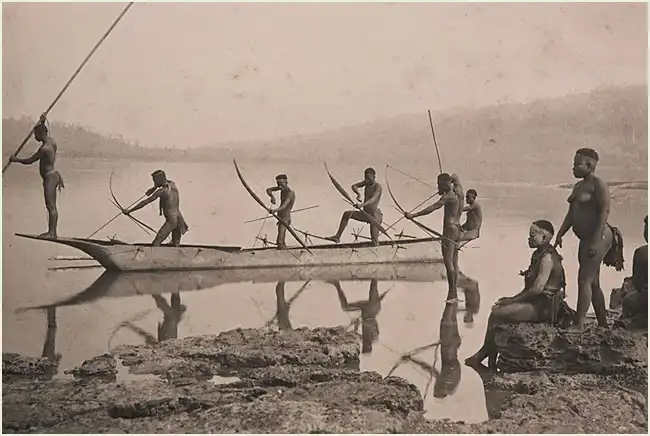
North Sentinel Island is home to one of the most isolated tribes in the world: the Sentinelese. This small group, estimated to number around 300 people, has had minimal contact with the outside world.
The Sentinelese are known for their strong resistance to modern influences. They use arrows to defend their island and keep visitors away. This isolation has helped them maintain their traditional way of life, unchanged for thousands of years.
The tribe is believed to be descended from some of the earliest human populations that migrated out of Africa. They have lived on North Sentinel Island for up to 60,000 years, making them one of the oldest continuous human societies. Their isolation and long history make the Sentinelese a unique and significant part of human heritage.
17. The Dugong Often Referred to as the Gentle Sea Cow
The Dugong, often referred to as the gentle sea cow, is the state animal of the Andaman and Nicobar Islands. These large, plump marine mammals are known for their peaceful grazing on sea grass in the warm coastal waters of the region.
With their short, paddle-like front flippers, Dugongs move slowly and gracefully through the water. They are sometimes called the “angel of the sea” due to their calm demeanor and serene presence.
You can spot these languid creatures in several areas, including Ritchie’s Archipelago, North Reef, Little Andaman, and parts of Nicobar. Their presence adds to the rich marine biodiversity of the Andaman and Nicobar Islands, making them an important part of the local ecosystem.
18. Pandunus or Nicobar Breadfruit is a Rare Fruit Found in Nicobar
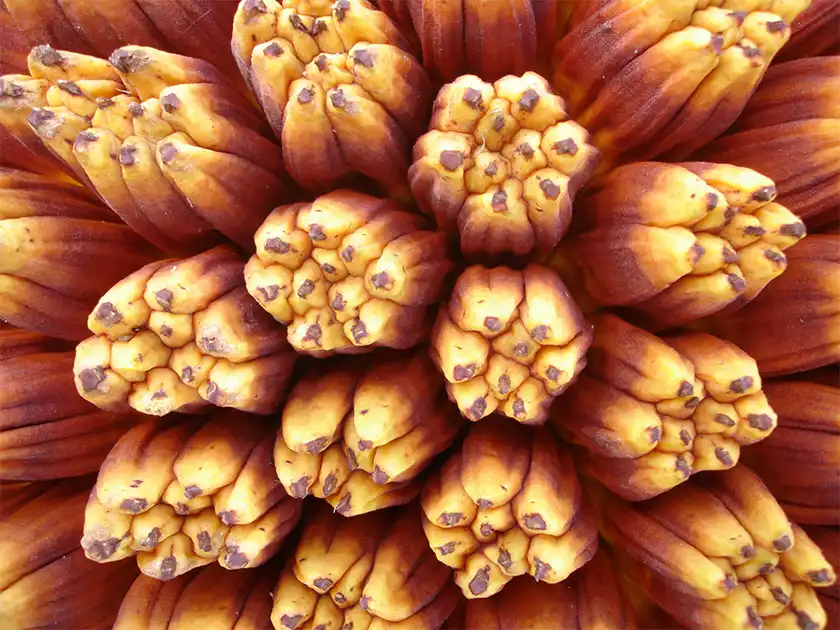
Pandanus, also known as Nicobar Breadfruit, is a rare and unique fruit widely eaten in the Nicobar Islands. This fruit has a hard, woody, and fibrous exterior, with several narrow, edible seeds embedded inside. The fruit is divided into sections, each with a fleshy base containing aromatic pulp.
After cooking, this pulp becomes a staple food in Nicobar, valued for its taste and nutritional benefits. Beyond its culinary uses, Pandanus is economically important in the islands. The stem branches are used in construction, the leaves are woven into mats, and the hard exterior of the fruit serves as a natural bathing brush. This versatile plant supports both traditional practices and local economies in the Nicobar Islands.
19. Commercial Fishing Has Been Banned Around the Andaman and Nicobar Islands
Commercial fishing has been banned around the Andaman and Nicobar Islands for over 40 years. This long-standing ban has allowed marine life to thrive in these waters, creating a rich and diverse ecosystem.
In the turquoise waters surrounding these emerald islands, fish are believed to live out their full natural lifespan. The ban has led to abundant populations of dolphins, whales, dugongs, sea turtles, sailfish, sea anemones, and other marine creatures.
This protection has helped preserve the vibrant marine life and stunning underwater landscapes, making the Andaman and Nicobar Islands a haven for wildlife and a beautiful destination for eco-tourism.
20. The Largest Living Arthropod in the World
The Robber Crab, also known as Birgus Latro or Coconut Crab, is the largest land-living arthropod in the world. These impressive crabs are known for their large size and strong claws.
Robber crabs primarily live on land but are famous for climbing coconut trees at night. They use their powerful claws to carve holes in tender coconuts to access the soft kernel inside. This behavior is one of their distinctive traits.
In South Asia, the highest populations of Robber crabs are found in the Andaman and Nicobar Islands. You can spot these giant crabs on South Sentinel Island as well as on some islands in the Nicobar group. Their presence adds to the unique biodiversity of the region.
21. The Home to Swiftlet Birds that Make Edible Nests
The Alfred Caves in Diglipur are fascinating limestone formations known for their unique characteristics. These extremely narrow caves undergo shape changes every monsoon due to a chemical process.
The caves are notable for being home to Swiftlet birds, which build their nests in these challenging environments. These small brown birds use their saliva to create sticky nests, attaching them to the most inaccessible spots on the cave walls. The nests are highly valued for their culinary use in bird’s nest soup.
In addition to Alfred Caves, Baratang Island also features limestone caves with impressive stalactite formations, showcasing the geological diversity of the Andaman and Nicobar Islands.
22. The 20 Rupee Note Depicts a Scene from Andaman and Nicobar Islands
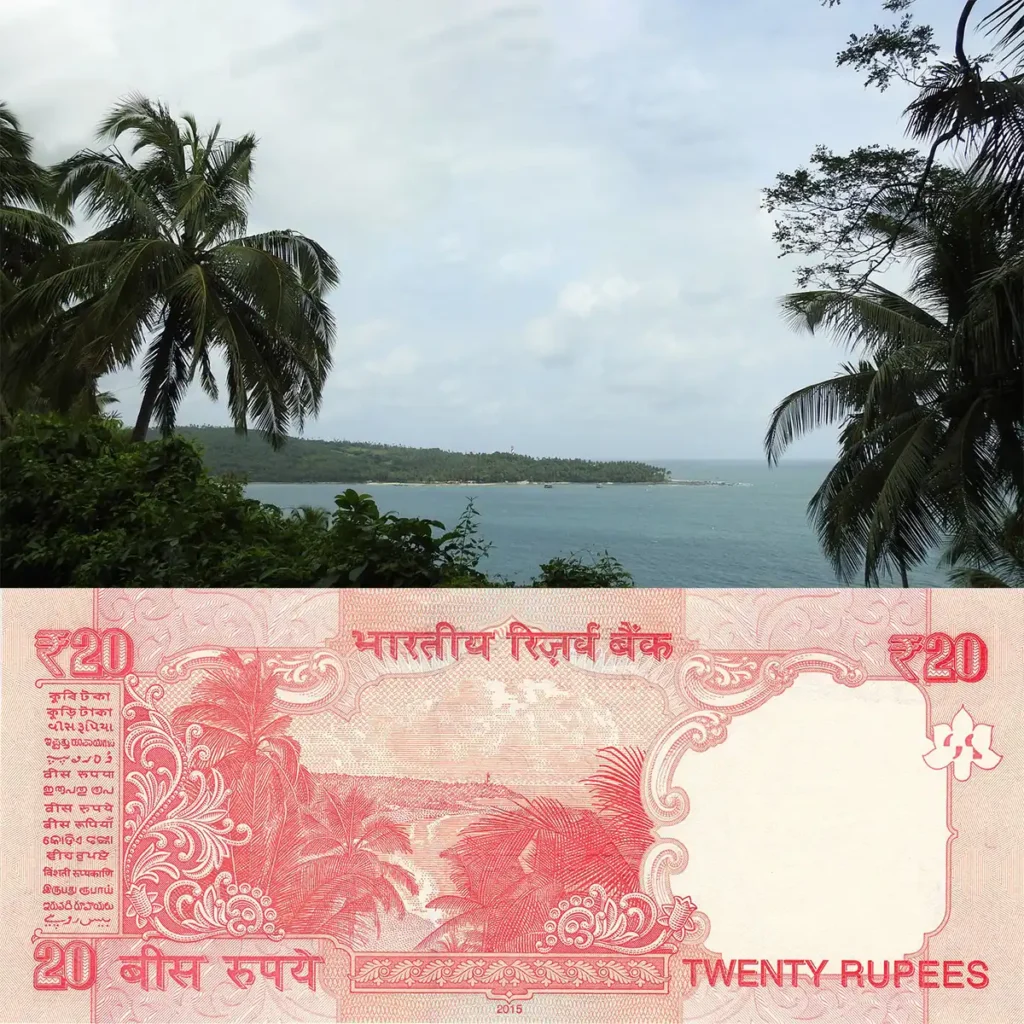
Have you ever looked closely at the 20 rupee note? It features a beautiful scene from the Andaman and Nicobar Islands. The image on the note shows a picturesque bay surrounded by lush greenery.
This scene depicts North Bay Island, which is visible on the route to Mount Harriet. Mount Harriet is the second-highest peak in the Andaman and Nicobar archipelago, offering stunning views of the surrounding landscape.
The depiction on the note highlights the natural beauty of the islands, capturing a serene and scenic part of this unique region.
23. The Only Place in India with Mud Volcanoes
Baratang Island in the Andaman and Nicobar Islands is unique in India for its mud volcanoes. The first recorded mud volcano eruption in this region occurred in March 1983 in Nilambur Village on Baratang Island.
Mud volcanoes are created when depressurized pore water and natural gases from decaying organic matter underground are emitted, often causing loud explosions and fire flares. Over time, these emissions build up to form a small, crater-like structure filled with rich, creamy mud.
These natural phenomena make Baratang a special destination, showcasing an unusual geological feature rarely found elsewhere in India.
24. India’s First Commercial Seaplane
Jal Hans, India’s first commercial seaplane, was launched in the Andaman and Nicobar Islands in 2013. The seaplane, operated by the government-owned Pawan Hans, is an eight-seater Cessna 208 A.
Seaplanes are versatile aircraft that can take off and land on both water and land. Jal Hans is equipped with modern navigation features and can travel up to 250 kilometers in an hour. Its ability to land on both water and land makes it particularly useful for reaching remote and isolated Andaman and Nicobar Islands areas.
The introduction of Jal Hans has enhanced connectivity in the region, offering a unique and efficient mode of transportation across the islands.
25. Ross Island Once Served as a Key Headquarters for the British
Ross Island once served as a key headquarters for the British in the Andaman Islands from 1858 until it was damaged by an earthquake in 1941. Following the earthquake, the Japanese took over the island and transformed it into a POW camp, constructing various war installations.
Today, Ross Island, now managed by the Indian Navy, is known for its intriguing blend of colonial ruins and World War II remnants. Visitors can explore its jungle-clad buildings and eerie wartime tunnels, making it a popular and historically rich tourist destination.
26. Kayaking Through Dense Mangroves
At Havelock Island, kayaking through dense mangroves offers a unique and thrilling way to experience the island’s exotic wildlife. The mangrove forests are vital ecosystems that serve as nurseries and breeding grounds for various marine and coastal species.
As you paddle through these serene waterways, you might spot a diverse range of life forms, including shrimps, algae, barnacles, oysters, sponges, mud lobsters, and mangrove crabs. The mangroves provide shelter and sustenance for these creatures, making the kayaking journey an immersive adventure into the heart of Havelock Island’s natural beauty.
27. The Impact of the 2004 Tsunami on India’s Southernmost Landmark
Indira Point, India’s southernmost point, subsided by 4.25 meters during the 2004 tsunami. This area, located about 600 kilometers south of Port Blair in the Andaman and Nicobar Islands, experienced significant damage from the massive waves that struck the region.
The tsunami not only caused tragic loss of life but also had a lasting impact on India’s coastal geography. Large portions of Indira Point, previously known as Pygmalion Point, were submerged, and a lighthouse that once stood as a landmark now remains partially underwater.
The shift in land elevation at Indira Point is a stark reminder of the devastating effects of the tsunami and the ongoing changes to the region’s coastline.
28. White Surf and Whisper Waves
Little Andaman Island is home to two stunning waterfalls that seem straight out of a storybook. White Surf Falls, located 6.5 km from Hut Bay Jetty, and Whisper Waves, 20 km away, are both mesmerizing natural wonders.
To reach these pristine waterfalls, you can embark on an exciting elephant safari or trek through the lush, verdant forests of the island. These journeys offer a unique opportunity to experience the island’s enchanting beauty up close.
29. India’s First Joint Tri-Service Defense Command
The Andaman and Nicobar Islands host India’s first and only joint tri-service defense command. Positioned at a critical naval and trade chokepoint, this command plays a pivotal role in national security.
The Andaman and Nicobar Command is unique for its tri-service structure, with rotating three-star commanders-in-chief from the Army, Navy, and Air Force. These leaders report directly to the Chairman of the Chiefs of Staff Committee. The command also serves as the focal point for India’s engagement with regional navies in Southeast Asia, underscoring its strategic significance.
30. Cultural Melting Pot
The Andaman and Nicobar Islands are a geographical gem with a rich cultural tapestry shaped by centuries of diverse influences. This archipelago is not only significant for its strategic location but also for its unique cultural blend that continues to evolve. The islands showcase a fascinating mix of indigenous rituals and traditional festivals, reflecting their deep-rooted heritage.
The local cuisine is a vibrant fusion of Indian, Asian, and European flavors, making it a culinary adventure for visitors. Exploring the Andamans means delving into this extraordinary cultural amalgamation, where ancient traditions meet a melting pot of global influences, offering a truly distinctive experience.
You may also like:
- 20 Proud Facts About India
- 20 Incredible Facts About Indian History
- 20 Great Indian Discoveries & Inventions
Conclusion: Andaman and Nicobar Facts
In summary, the Andaman and Nicobar Islands are a treasure trove of remarkable facts and stories. Whether it’s the world’s largest living arthropod, the only active volcano in India, or the strategic military command, these islands present a blend of natural marvels and historical significance. By delving into these facts about Andaman and Nicobar, we gain a deeper appreciation for the islands’ unique place in both natural history and global geopolitics.



